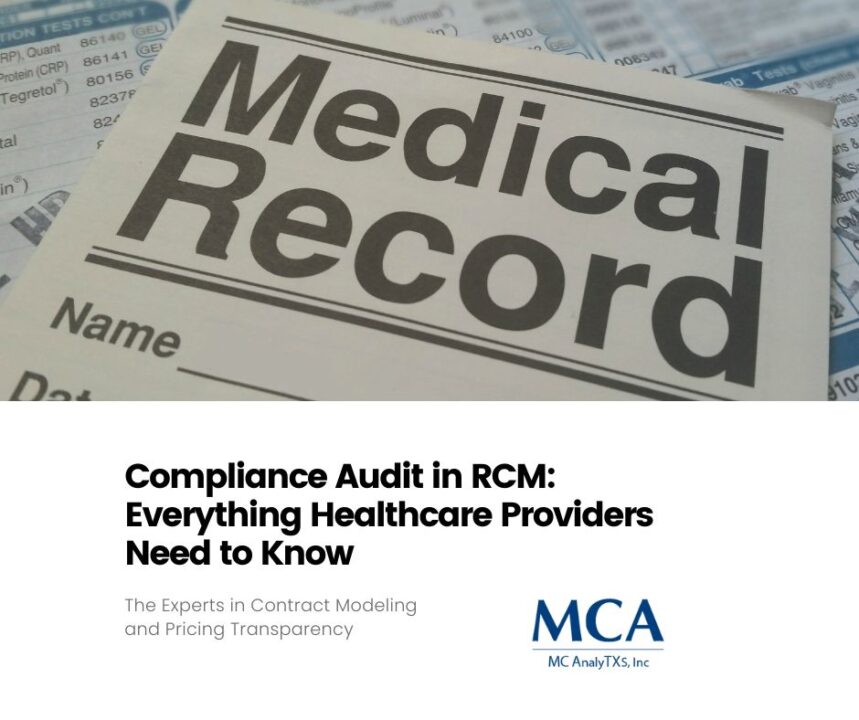
Why MC AnalyTXs Should Be Your Top Pick as an RCM Vendor for Healthcare
April 17, 2024
The Strategic Financial Pulse of Healthcare: Revenue Integrity Management for CFOs
April 25, 2024This in-depth guide is designed for healthcare providers who are determined to not only make sense of the complexities of payer relationships but also leverage them to secure their financial health in an increasingly dynamic healthcare environment.
The High Stakes of Financial Health for Healthcare Providers
Without a robust financial foundation, healthcare providers stand on shaky ground. The costs associated with operational excellence, quality of care, and expansions are not trivial. Payer strategies have a direct influence on a provider’s bottom line. Understanding and effectively navigating these strategies are critical in ensuring the sustainability and growth of any healthcare institution.
Unraveling Payer Strategies
The Dance of Reimbursement Models
Understanding payer strategies begins with a deep-dive into the varied reimbursement models that dictate how providers are paid for their services. From the tried and true fee-for-service, which compensates for quantity, to the burgeoning pay-for-performance models that reward quality and outcomes, each has its own set of complexities and nuances.
The Economic Composition of Payer Mix
Payer mix is more than just a metric; it is a testament to the financial diversity and health of a provider organization. Exploring the dynamics of payer mix and its alignment with an institution’s financial strategy is pivotal in balancing risk and reward in the healthcare financial equation.
The Emergence of Value-Based Care
Value-based care is not just a trend; it’s a complete transformation in the way healthcare is delivered and paid for. This segment will explore what value-based care strategies mean for a provider’s revenue flow and operational approaches, and how to adapt to this new healthcare model.
The Regulatory Web
The regulatory environment provides the scaffolding upon which payer strategies are built. From CMS guidelines to state regulations, understanding the legal frameworks that shape payer behavior is a necessary step in financial planning and strategy.
Building Strong Payer Relationships
Payers are not just financial intermediaries; they are vital partners in the healthcare ecosystem. Developing and nurturing robust relationships with payers can lead to mutual wins. The art of building these relationships will be broken down into actionable steps that go beyond the usual ‘networking’ strategies.
Forging Partnerships, Not Just Transactions
Transitioning from a transactional to a relational approach can open doors to collaborative opportunities and assist in aligning strategies between providers and payers. We will explore the mindset and practices necessary for cultivating meaningful partnerships.
Communication and Negotiation Best Practices
High-stakes negotiations and intricate communication pathways are par for the course in payer-provider interactions. This section will provide proven tactics for engaging with payers that can lead to more favorable terms and outcomes.
Revenue Cycle Management and Beyond
Securing the payment for services rendered is not the end game—it’s just the beginning. Effective revenue cycle management (RCM) is critical in a provider’s financial strategy, ensuring timely and accurate cash flow. This segment will provide a step-by-step guide to optimizing RCM processes for maximum efficiency and efficacy.
Leveraging Data for RCM Optimization
Harnessing the power of data analytics can unearth inefficiencies in the revenue cycle, enabling providers to make strategic changes that lead to better financial outcomes. This part will underscore the importance of data literacy and action in the RCM function.
Operational Excellence and the Revenue Cycle
Streamlining operations that intersect with the revenue cycle is an often overlooked element of RCM. We will discuss how operational excellence in areas such as scheduling, front-end processes, coding, and billing can have a multiplier effect on financial health.
Conclusion: Payer Strategies and Your Financial Future
The landscape of payer strategies is continuously shifting, influenced by technology, policy changes, and evolving consumer expectations. Providers who equip themselves with the knowledge and tools to understand and adapt to these changes will be better positioned to not only survive but to thrive financially in the healthcare industry.
For healthcare providers, the roadmap to financial health is as multi-faceted as the patients they serve. By mastering the intricacies of payer strategies, providers can set the stage for a stronger, more robust financial future—one that supports their mission to deliver high-quality care to those who need it most.
This is not a passive endeavor but an active pursuit of understanding and engagement with the mechanisms that drive healthcare economics. Armed with the insights provided in this guide, healthcare providers can take charge of their financial destiny, ensuring that every dollar spent and earned contributes to the greater goal of advancing health and well-being.





